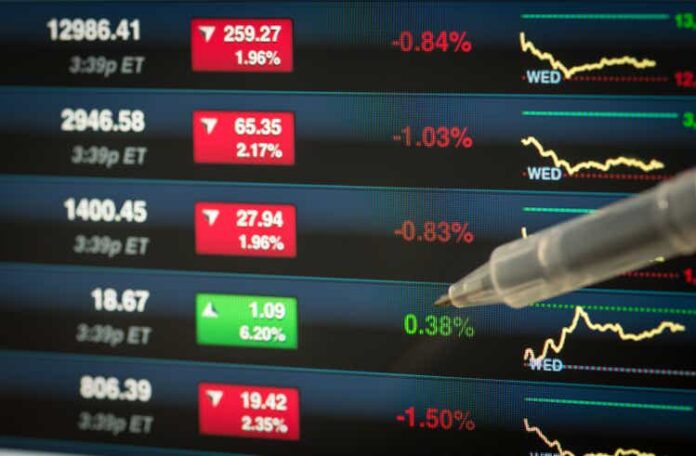Wall Street’s three major averages on Wednesday had moved higher after a bout of volatility, while Treasury yields fell following economic data that showed a softening in job openings in July.
U.S. stocks are coming off their worst day since “Black Monday 2024″ as growth worries resurfaced following weak data on the manufacturing sector. It was also the start of September, a month that has been historically weak for markets.
The major gauges opened lower, but then recovered some losses after that to trade mixed. They remained largely unchanged after the jobs data, then began to inch upward. The Nasdaq (COMP:IND) was last +0.14%, while the benchmark S&P 500 (SP500) was +0.18%. The blue-chip Dow (DJI) was +0.38%.
U.S. Treasury yields moved lower as bonds were snapped up. The 10-year yield (US10Y) was now down 4 basis points to 3.79%. The 2-year yield (US2Y) was down 7 basis points to 3.80%.
The July Job Openings and Labor Turnover Survey (JOLTS) data came in softer than expected. The number of job openings dropped to 7.673M from 7.910M in June, while coming in lower than the 8.090M consensus.
“The ratio of job openings to unemployment (V/U) declined to a fresh low of 1.071 in July, about where it was in April 2018. This is yet another sign that labor demand has cooled, going a bit beyond where we were just before the pandemic,” Renaissance Macro Research said on X (formerly Twitter).
The JOLTS data comes two days ahead of the August nonfarm payrolls report, likely keeping growth concerns in the spotlight.
“As September got going after the Labor Day holiday on Monday, the month yesterday started living up to its billing as the worst month of the year for risk with a notable sell-off,” Deutsche Bank’s Jim Reid said.
The main catalyst for Tuesday’s sell-off was initially the latest ISM manufacturing print, which renewed investors’ concerns that the U.S. economy is running out of a bit of momentum, Reid added.
Also see some other reasons here for the selling according to Goldman Sachs’ FICC & Equities Trading Desk.
Additionally, Nvidia’s (NVDA) 9.5% fall yesterday also weighed down the market. The chip giant erased nearly $280B in market value.
Wednesday’s economic calendar also saw the U.S. International Trade in Goods and Services deficit widening to $78.8B in July from -$73.0B in June, while coming in line with the -$78.8B consensus. Meanwhile, U.S. factory orders rose more than expected in July, reversing two months of declines.
The Fed’s Beige Book will also come later in the day.
Source link






